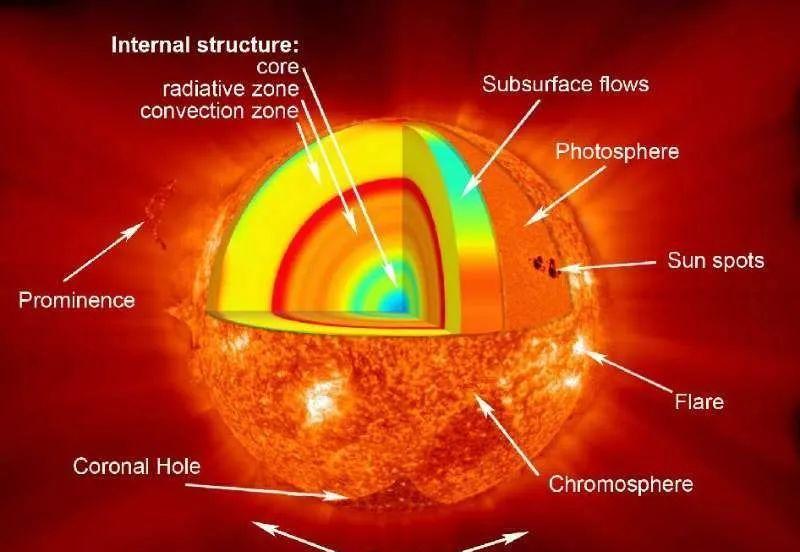On December 14, at a meeting of the American Geophysical Society (AGU) in New Orleans, NASA announced that the Parker Solar Probe would be the first to enter the corona, the sun's outer atmosphere.

The Sun has six regions, namely the core, the radiation region, the convective region, the photosphere, the chromosphere, and the corona.
Credit:NASA
Unlike Earth, the Sun has no solid surface, but has a superheated corona, which is the outermost layer of the Sun. The corona stretches for thousands of kilometers from the surface of the Sun, and during a total solar eclipse, we can see the corona with the naked eye.
Total Antarctic Eclipse on December 4, 2021.
Screenshot from NASA TV.
The material in the corona is an extremely hot but very thin plasma that exceeds 1 million degrees Celsius, more than 180 times higher than the temperature of about 5500 degrees Celsius on the surface of the Sun. The material in the corona is contained by the sun's gravity and magnetic forces, and these forces are too weak to contain this material from being thrown out, and the tipping point is called the corona edge, which scientists call the Alfvén critical surface, which is the outer edge of the solar atmosphere and the starting point of the solar wind.
Based on images of the corona, scientists estimate the Alfin Pro interface, located in an area 4.3 million miles (6.92 million kilometers) to 8.6 million miles (13.84 million kilometers) from the sun's surface.
To quote Corey M. In a comment by Corey S. Powell, voyager 1 passed through the heliopause nine years ago and entered interstellar space, and now the Parker Solar Probe has entered the "inner space" of the sun, where the solar wind begins.
Credit:NASA
On April 28, 2021, during the eighth solar flyby of the Parker Solar Probe, about 8.1 million miles (13.03 million kilometers) from the sun's surface, it encountered specific magnetic ions, indicating that the Parker Solar Probe had for the first time skimmed the Alfin Pro interface and entered the solar atmosphere.
Let's look at a stream of particles encountered by the Parker Solar Probe, which was taken from August 8 to August 12, 2021 by the Solar Probe's Wide Angle Imager (WISPR), with the Milky Way visible in the background.
reference
https://www.nasa.gov/feature/goddard/2021/nasa-enters-the-solar-atmosphere-for-the-first-time-bringing-new-discoveries